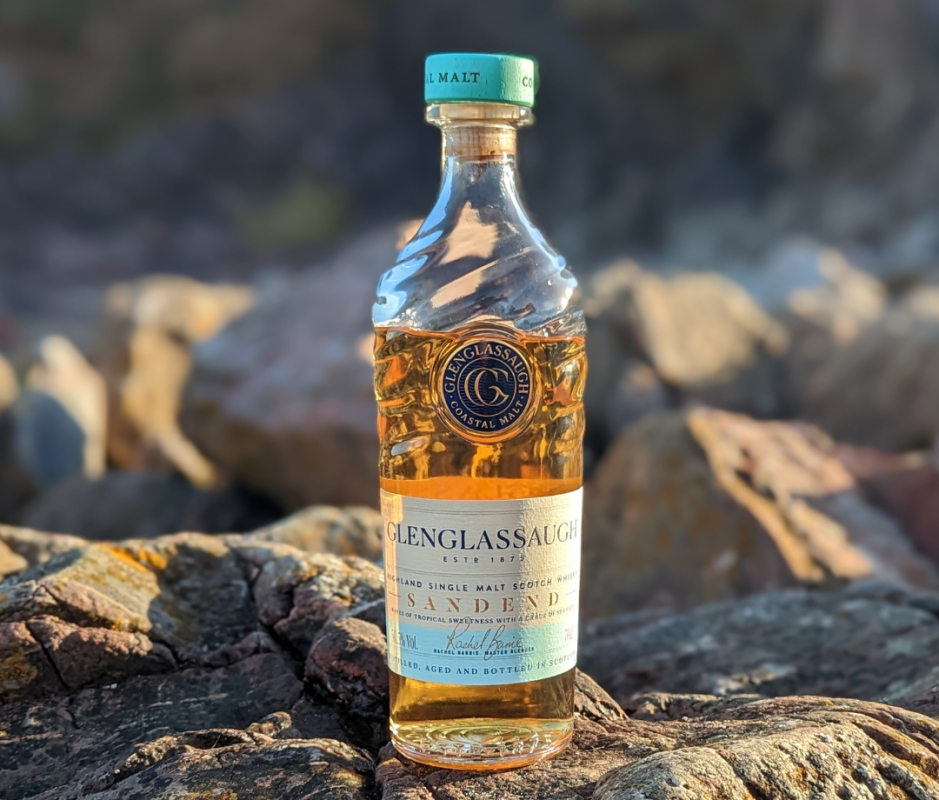I don’t think it’s unfair to say that many industry-standard taste descriptors—like smoky peaty, bold, or briny—are sometimes hard to pin down. That’s why, when I tried Sandend, a Scotch whisky “enlivened by the ocean shore,” I was skeptical.
Thankfully, I was also downright wrong. You can definitely smell and taste the clean ocean breeze in this bottle of single malt, which is building a cult following for the 150-year-old Glenglassaugh Distillery.
Located on the gorgeous Scottish coast in Aberdeenshire, Glenglassaugh opened in 1875 and, like many distilleries, it's been through the ringer ever since. Over a century and a half, it survived a crash in the whiskey market, break-in by copper scrappers in 2006, and merch heist in 2014.
Want the latest whiskey news, deals, and reviews? Sign up for the Whiskey Wednesday newsletter.
Glenglassaugh also spent a total of 70 years out of operation as it weathered the ups and downs of the whiskey industry. After it was bought and resold a handful of times, the stills restarted in 2008. In 2016, Brown-Forman—which also owns Jack Daniel’s, Benriach, and Woodford Reserve—bought the brand.
To get things into motion, Brown-Forman brought in Rachel Barrie, a respected forward-thinking master blender, often considered the first lady of Scotch whisky. Barrie has been instrumental in leading a number of distilleries during her career, and with her efforts, Glenglassaugh settled on its core line of coastal Highland malts.

Andy Vasoyan
Even on that temperate line, it doesn’t get more coastal than Sandend, which is named after the picturesque bay the distillery overlooks. The brisk taste of sea air leads the palate before delicious fruit-forward notes arrive in the middle. And at 50.5 percent ABV, it finishes with a respectable heat. Put all that together, and you win awards—like Sandend did when it was released in 2023. That’s a surprise, considering the Scotch doesn’t even have an age statement.
In a world where super-aged whiskeys command ultra-expensive prices, dodging the age statement is a turn off for many enthusiasts. When a whiskey sits in barrels in Scotland, the maturation process proceeds at a slower pace than other, warmer climates. The hotter it is in the warehouses where the whiskey is stored, the more liquid is absorbed and released by the wood of the cask, which infuses the juice with the essence of the barrel.
Obviously, you can change that with modern climate control techniques, but in general, Tennessee whiskeys, Japanese whiskies, and even Indian whiskeys all age at different rates. That’s why Scotch whiskies often sit for years on end before getting to the desired taste profile. A Scotch that sits for 10 years might not be mature, while a bourbon that sits for a decade might be overdone.
But all that skepticism and technical hullabaloo is wasted on Sandend, because it's just straight-up tasty. If there was a grooming product that smelled like Sandend, I would purchase it immediately. If I was sipping it on the beach and charged by angry wildlife, I would defend my bottle. And if anyone wanted to try it on the rocks, I’d pour it without a second thought.
Sandend sits comfortably in the $75 price range, which is respectable for a single malt. This is not your dad’s overpriced, ultra-peaty 20-year Scotch hidden in the desk drawer. This is an easy-sipper with a beautiful golden color and bottle that looks more like a hip craft release than the core product of a distillery with a century and a half of history behind it.
No age statement? No problem. Sandend is already outside what the conventional crowd expects a great Scotch to be. Instead, anyone who tries it will learn that some Scotches have the potential to be just as fruity and pleasant and smooth as a bourbon. Pour a glass and taste the ocean breeze.
from Men's Journal https://ift.tt/bhANczt
No comments:
Post a Comment